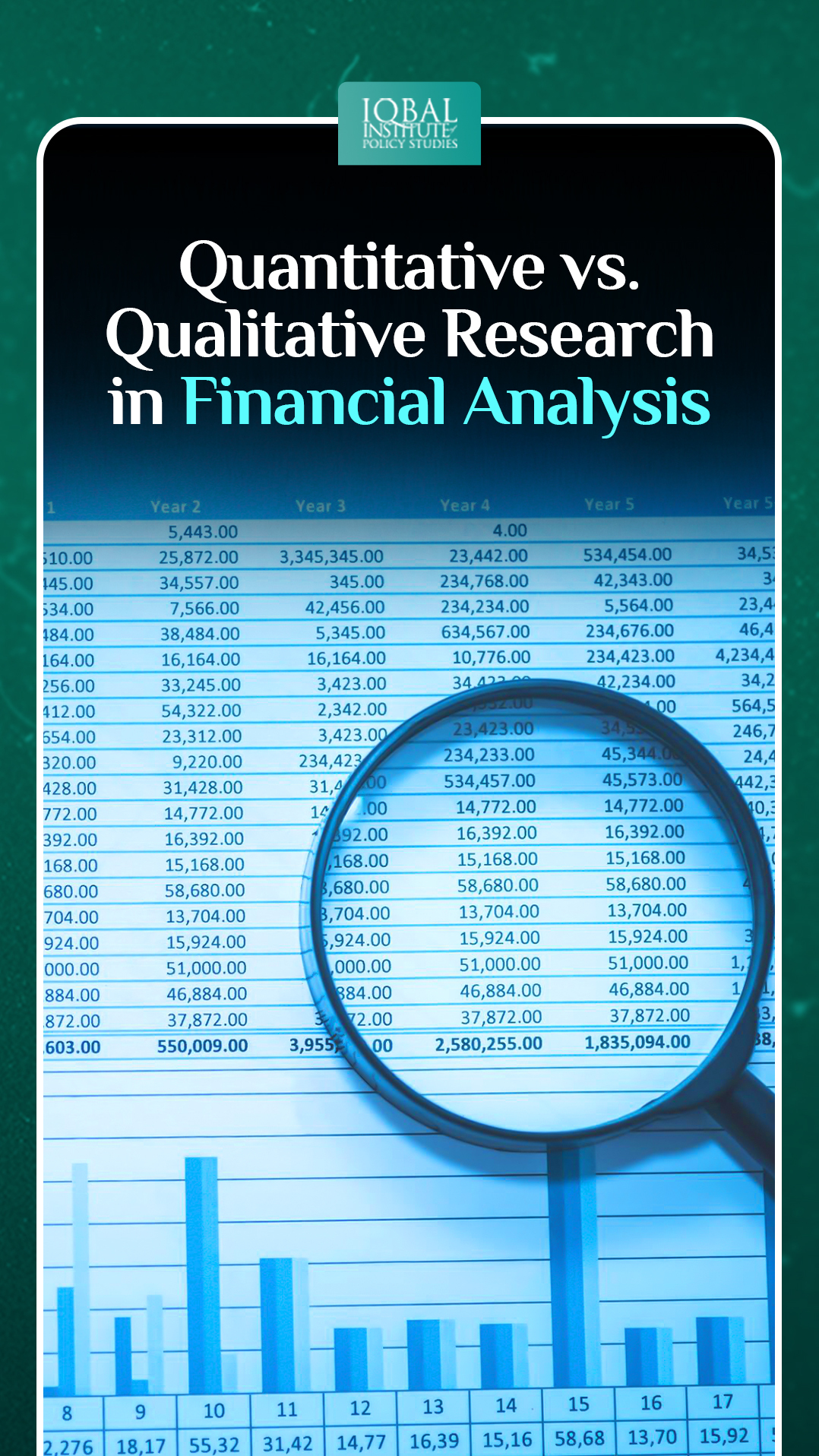In the ever-evolving landscape of financial analysis, the methodologies employed to extract meaningful insights are as diverse as the markets themselves. Among these methodologies, two predominant approaches, quantitative and qualitative research, hold sway in shaping the narrative of financial decision-making. This blog aims to dissect the intricacies of these methodologies, shedding light on their distinct characteristics, strengths, and limitations.
Understanding Quantitative Research in Financial Analysis
Quantitative research is a structured approach that relies on numerical data and statistical methods to dissect and interpret financial phenomena. In the context of financial analysis, this method involves crunching numbers from historical financial statements, market prices, and various economic indicators. The primary objective is to quantify trends, patterns, and relationships, thereby providing a solid foundation for data-driven decision-making.
Strengths of Quantitative Research
Quantitative analysis offers several advantages that contribute to its prominence in financial research.
Objectivity
One of the hallmark strengths of quantitative research is its inherent objectivity. By relying on numerical data, this approach minimizes the impact of personal biases, contributing to the reliability and replicability of findings.
Statistical Significance
The use of large datasets allows for robust statistical analysis, enabling researchers to identify patterns and correlations with a high degree of statistical significance. This statistical rigor enhances the credibility of the conclusions drawn from quantitative analysis.
Measurability
Financial metrics such as return on investment (ROI), earnings per share (EPS), and price-to-earnings (P/E) ratios provide tangible and measurable indicators of a company’s performance. These metrics form the bedrock of quantitative analysis.
Limitations of Quantitative Research
However, despite its strengths, quantitative research is not without its limitations.
Lack of Context
Despite its objectivity, quantitative analysis may fall short in providing a comprehensive understanding of financial events. It often lacks the nuanced context that qualitative research can offer, potentially leading to a superficial interpretation of data.
Market Volatility
In dynamic markets, quantitative models may struggle to adapt quickly to sudden changes. Historical data, while valuable, may not always accurately predict future market behavior, particularly in the face of unprecedented events or market volatility.
Overemphasis on Numbers
Relying solely on quantitative metrics may result in an oversight of qualitative factors that could significantly impact financial performance. The exclusive focus on numbers may miss the human and behavioral elements at play in the financial ecosystem.
Unraveling Qualitative Research in Financial Analysis
In stark contrast to quantitative research, qualitative research is a more interpretive and exploratory approach that focuses on understanding the underlying reasons and motivations behind financial phenomena. This method involves delving into non-numerical data, such as management quality, corporate culture, and industry trends.
Strengths of Qualitative Research
Qualitative research brings its own set of strengths to the table, offering a more holistic perspective.
Contextual Insight
Qualitative research provides a deeper understanding of the context surrounding financial events. It allows researchers to uncover the motivations behind management decisions, grasp market dynamics, and discern industry trends.
Flexibility
In the face of uncertainty and rapidly changing circumstances, qualitative research offers flexibility. Researchers can adapt their methodologies to explore emerging themes that might not be captured by rigid quantitative models.
Subjective Assessment
Qualitative analysis accommodates subjective assessments based on expert judgment and industry knowledge. This human touch allows for a more holistic evaluation, considering factors beyond the reach of numerical data.
Limitations of Qualitative Research
However, qualitative research is not without its challenges.
Subjectivity
A significant limitation of qualitative research lies in its inherent subjectivity. Interpretations may vary among researchers, introducing potential biases into the analysis. This subjectivity necessitates a keen awareness of the researcher’s role in shaping the findings.
Limited Generalizability
Findings from qualitative research may not always be easily generalized to broader populations or scenarios. The depth of understanding gained through qualitative methods is often context-specific, limiting the generalizability of the insights.
Time-Consuming
Qualitative analysis can be time-consuming, involving in-depth interviews, case studies, and content analysis. In the fast-paced world of financial markets, the luxury of time may not always be available, making qualitative research less practical in certain situations.
Integrating Both Approaches for Holistic Financial Analysis
Recognizing the strengths and limitations of both quantitative and qualitative research, an integrated approach emerges as a powerful strategy for achieving a comprehensive understanding of financial phenomena. By combining the precision of quantitative analysis with the depth of qualitative insights, researchers can create a more nuanced and resilient framework for decision-making.
The Synergy of Quantitative and Qualitative Insights
Comprehensive Understanding
The marriage of quantitative and qualitative research enables a more comprehensive understanding of financial events. Quantitative data provides the “what,” while qualitative insights offer the “why” behind the numbers.
Risk Mitigation
Integrating both approaches allows for a more robust risk mitigation strategy. While quantitative models may falter in times of extreme volatility, qualitative insights can provide a more nuanced understanding of the underlying risks and opportunities.
Enhanced Decision-Making
Informed decision-making benefits from the convergence of both quantitative and qualitative perspectives. This integration fosters a holistic view that considers not only the numerical indicators but also the broader contextual factors influencing financial outcomes.
Case Studies
To illustrate the effectiveness of integrating both approaches, we can delve into specific case studies and examples where a combined quantitative and qualitative analysis led to more accurate predictions or a deeper understanding of financial phenomena.
Case Study 1
The Tech Boom of the 1990s: Examining the dot-com bubble through the lens of both quantitative market indicators and qualitative analysis of the companies involved sheds light on the factors that led to the boom and subsequent bust.
Case Study 2
Impact of Leadership Changes on Stock Performance: Analyzing the stock performance of companies undergoing leadership changes requires a combination of quantitative metrics and qualitative assessments of the new leadership’s strategic vision and management style.
Conclusion
In the dynamic and complex world of financial analysis, the dichotomy between quantitative and qualitative research is not a stark division but a continuum. Recognizing the complementary nature of these approaches and strategically integrating them can empower researchers to navigate the intricate landscape of financial markets.
As financial analysts continue to adapt to evolving market dynamics, the integration of quantitative and qualitative research will remain a cornerstone of successful financial analysis. The pursuit of a balanced approach, leveraging the strengths of both methodologies while mitigating their respective limitations, promises to unlock deeper insights and enhance the resilience of financial decision-making.
Through case studies and real-world examples, this exploration demonstrates that the power of financial analysis lies in embracing both the precision of quantitative analysis and the depth of qualitative insights. In doing so, analysts can not only navigate the complexities of the financial landscape but also make informed decisions that stand the test of time.
This article is written by Radma Nouman. Radma is a research analyst at the Iqbal Institute of Policy Studies (IIPS).



Leave a Reply